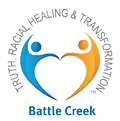Insights from Kathy Antaya: How Personability Drives Racial Solidarity
- BCTRHT Team

- Dec 11, 2024
- 2 min read
Updated: Jan 28

Kathy Antaya witnessed racism at a young age. Growing up in Detroit, she watched her Black neighbors and classmates get discriminated against, which led her to stand in solidarity with people of color and advocate against systems of oppression.
"I was six when the first Black family moved onto our block. I ran over to their house, excited to have new friends to play with," she said. "The next day, I went to play with my old neighbor Robby, and his dad told me I couldn't play with his son anymore because he saw me talking with the new neighbors."
From that moment, Kathy began paying attention to the mistreatment of people of color and speaking up about it. She questioned why her Black classmates were disciplined more harshly than white kids and why people of color lived in different neighborhoods. Her questions ultimately grew into a commitment to advocating for racial equity. Now, she is a life member of the BC Branch NAACP and serves as their 2nd Vice President and Chair of the Legal Redress Committee. Kathy is also immersed in local efforts to build bridges between diverse groups.
"I grew up in a white middle-class family, and my parents taught me to respect and support people regardless of race," she said. "But it wasn't until I got involved with the NAACP that I truly understood the solidarity between white folk and people of color."
She shared the importance of white people stepping into spaces of people of color to understand how it feels to be the minority in a group.
"We need to better understand what our friends of color go through daily. White folks can't ever fully grasp their experience, but we can listen better and put ourselves in situations that help us to understand."
Kathy talks about how everyone has a role in addressing systemic oppression, and that's what true solidarity looks like—everybody fulfilling their role. She references her learnings working with the NAACP to address community discrimination complaints and how that helped her understand the role of relationship-building in engaging in solidarity.
"Sometimes people just want to connect with someone they know has lived in their shoes, and understandably so," she said. "But often it's an opportunity to break racial barriers through empathy."
She explains how white people and people of color must engage in personal conversations to expose their shared humanity and create change. She shares the profound opportunity racial healing circles have to bring white people into a space with people of color.
"They provide a space for people to understand the gaps of interracial dynamics and what may be informing them," she said. "And that inspires people to learn, build relationships, and change their perspectives."
Kathy attributes racial healing circles to helping her better navigate conversations on race. She says she notices more engagement within the NAACP from white people following their participation in a racial healing circle and how that gives her hope.
"We must come together to avoid catastrophic upheaval in our country. It's the only way."




Comments